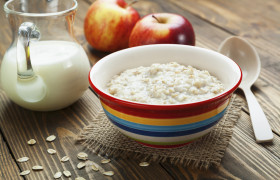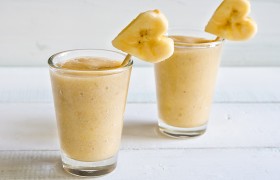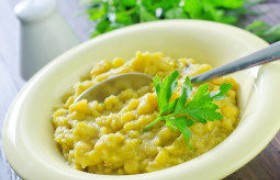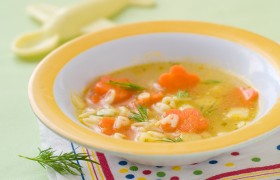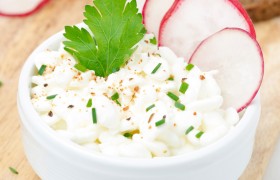
Nutrition from 6 to 12 months
Starting complementary feeding
Complementary feeding involves progressively introducing other foods besides milk to your baby’s diet.
However, milk must continue to be your baby’s staple diet.
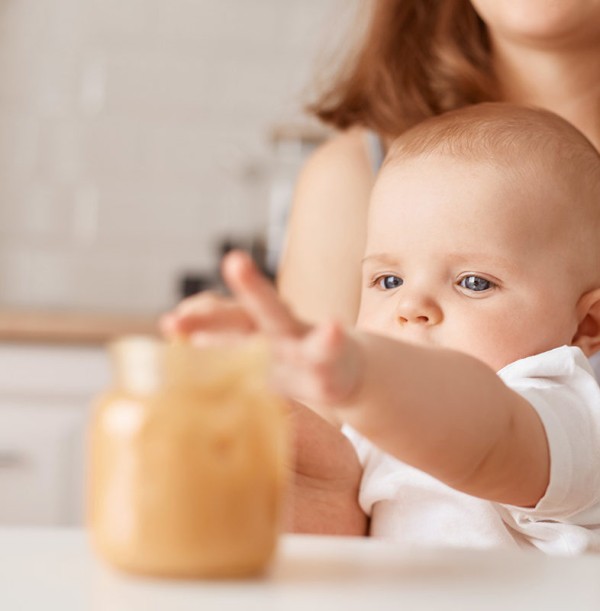
Complementary feeding will help her gradually transition from baby food to solid food for older children, an important milestone for her growth, her autonomy, and her future dietary balance.
New foods should be introduced gradually, generally when your child is around 6 months old. Your doctor will provide guidance on the foods to start introducing.
Your baby will go from several feeds a day to 4 meals, a rhythm that she will keep until adolescence.
Smoothly transitioning to using a spoon and solids is the key to having a happy eater; a balanced diet, and good health.
Getting the ratio right
Refer to our nutritional guide for menu ideas and a complementary feeding table which provides an overview of foods to introduce by age.
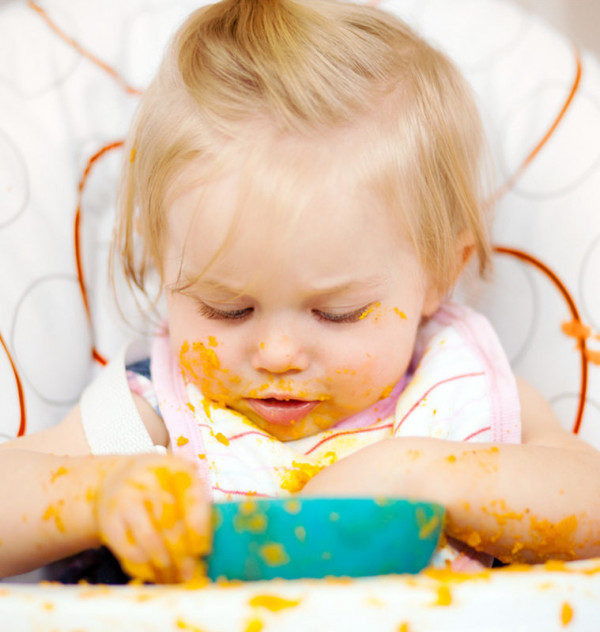
Time to eat!
Starting at 6 months
Your child is ready to practise her chewing skills, to start using a spoon, a plate, and a cup. While she adapts and acquires all these new skills, mealtimes may be a bit slow.
At first, and as advised by your doctor, offer your baby smooth purées from cooked fruits and vegetables to complement milk, along with cereal in her bottle.
It is best to only introduce one new taste at a time and to avoid blends.
Starting at 9 months
You can now mash your baby’s food with a fork, and she might even enjoy small pieces, depending on her ability to chew them.
She will soon be ready to eat by herself and to eat meals with the rest of the family.
What foods can be introduced?
- Vegetables, preferably low-fibre ones, as they are easier to digest: squashes, green beans, peeled courgettes, carrots, etc. You will need to blend them into a smooth consistency, and bind them together with some potato, as needed.
- Fruit: these must be stewed and puréed. No need to add any sugar.
- Infant cereals: provide additional energy as your baby goes through growth stages while contributing to her discovery of new flavours. These are a good complementary source of vitamins and minerals needed by babies.
- Meat, fish, eggs, and even organ meats: about 10 g a day, which amounts to 2 level teaspoons or ¼ of a hard-boiled egg. Blend them together so the texture is easy to chew. Avoid cured, fatty, and very salty meats.
- Water. With and between meals and without any sugar added.
Don’t forget to add fats to your baby’s meals (such as butter or an oil, such as rapeseed).
Good to know: Fruits and vegetables contain high levels of healthy micronutrients, such as vitamins, fibres, and minerals. Meat, fish, eggs, and organ meats provide protein, essential to the development and functioning of your baby’s body.
New on the menu!
- Fruit can now be given raw in small quantities, or mashed with a fork. You can alternate this with stewed fruit.
- The quantity of meat increases from 15 to 20 g a day, or 3 level teaspoons, or 1/3 of a boiled egg, preferably at lunchtime.
- The quantity of dairy products increases, gradually replacing part of the baby’s intake in milk. Emphasise the simplest forms of dairy products: plain, without any added sugars. They must be pasteurised, as your baby’s body is more sensitive to the bacteria in raw milk.
- Grains and grain-based products: rice, small pasta, porridges, etc. Now that your baby can chew small pieces, you no longer need to serve grains in the form of flour. Rice and pasta must be cooked thoroughly and blended if needed. You can also get your baby used to the taste of bread, removing the crust and giving her the soft part, so it doesn’t go down the wrong way.
Don’t forget to add fats to your baby’s meals (such as butter or an oil, such as rapeseed).
Be careful! Honey not intended for baby food should not be given to children under the age of 1 year. It might contain Clostridium Botulinum spores, which may develop a toxin in your baby’s intestine (which is more sensitive than ours, as the digestive immune system of babies is not mature).
Our recipe ideas
France Lait Laboratory has selected a collection of tasty little meals you can cook for your baby.
Baby’s progress

Your baby is attentive to sounds, and looks for where they are coming from.

She has a go at crawling, understands yes and no.
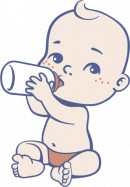
Baby bangs objects together, can hold her bottle by herself and says a few syllables.

Baby sits up by herself.

Baby can also crawl.
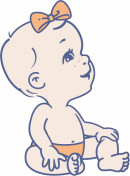
She wants to hold her spoon and finds hidden objects.

Your baby holds things between her thumb and her index finger.

Baby can stand up without holding on and starts speaking with adults.
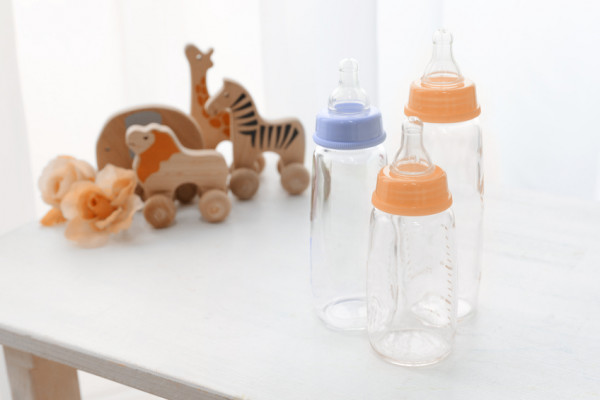
Preparing a bottle
Breastfeeding is still ideal. If you cannot or do not want to breastfeed, follow-on (2nd stage) milk is infant formula that is best adapted to the needs of babies between the ages of 6 months to 1 year.
Your doctor will advise you on the infant formula that is best for your baby.
Remember to check the date on the tin to make sure that it has not passed its best-by date. Follow the directions on the packaging when preparing your baby’s bottle.
In terms of water, you may use:
Tap water, if you follow these precautions:
- get in touch with your local authority to find out about water quality in your area,
- only use cold tap water, letting the water run for 1 to 2 minutes if you haven’t used the tap in a while,
- use unfiltered, unsoftened water,
- check the condition of your tap: if it is fitted with a diffuser, descale it regularly.
Bottled water that is suitable for infants (check the label), which has been open for less than 24 hours.
Bottles can be given at room temperature, heated in a double boiler or a bottle warmer, or in the microwave, making sure that it is not too hot.
Be as attentive and caring as when you are breastfeeding.

Our answers to your questions
-
Follow-on and second stage milks contain nutrients that are essential to the growth and development of your child, in accordance with current regulations.
They have been carefully formulated to meet the requirements of infants aged 6 to 12 months who are starting complementary feeding. -
You will ideally have several; allowing for a rotation between meals when you are washing and sterilising them. They must all meet the same infant safety requirements.
Bottles come in glass and in plastic, in varying shapes and sizes:- glass bottles are more resistant to sterilisation and to frequent washing. They hold the heat well, but are heavier, and more breakable. They are good for starting out.
- plastic bottles will quickly end up looking duller, but are solid and light. Offer them when your baby is able to hold them by herself.
Most importantly, the markings on the bottle should be clear and easy to read.
